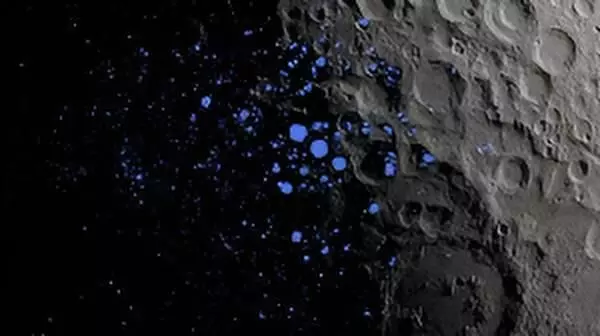NASA’s Artemis Mission Set to Unlock 4-Billion-Year-Old Secrets at Moon’s South Pole
NASA’s Artemis mission aims to explore the Moon’s south pole, potentially uncovering 4-billion-year-old ice deposits and secrets about the solar system’s formation.
NASA’s Artemis astronauts will explore the Moon’s south pole, targeting craters in perpetual darkness to study ancient ice and frozen volatiles.

NASA's Artemis project is preparing for a mission to the Moon's enigmatic south pole, which is a darkness-covered region and may be the one to tell us how the solar system got formed. The unexplored area of the Moon south pole may be a possible hiding place for water ice and other frozen substances, giving us a new perspective on how Earth got its water and thus the possibility of even changing the course of space travel.
The Moon's South Pole: A Frozen Time Capsule
Unlike the illuminated areas that can be seen from Earth, the Moon's south pole has craters like Shackleton, Haworth, and Faustini that never get sunlight directly. The temperature in these areas falls to a record low of -230°C (-382°F) which implies that these ancient ices with water and other gases like carbon dioxide, ammonia, and methane are still around, possibly unchanged for more than 4 billion years. Scientists think these volatiles were brought by comets and asteroids which means that they are giving us a very clear picture of the early solar system.
Artemis Mission: Unraveling Lunar Mysteries
Among the Apollo 11 mission's historical events, the fact that it was the last time NASA sent astronauts to the Moon is surely a remarkable one. The next crewed lunar mission, Artemis III, will not only be targeted at the south pole but will also see astronauts using the same drills, rovers, and sensors used by robots to gather core samples from below the surface. By analyzing isotopes in the ice, researchers expect to reveal the water source of lunar water—be it Earth, comets, or solar wind— thus answering a basic inquiry regarding the presence of water in the solar system.
The Importance of Lunar Water
Moon water is not merely an issue of scientific interest but rather a matter of great importance. The ice can be decomposed into hydrogen and oxygen, which are the components of rocket fuel and also human respiration. If ice deposits are confirmed, the Moon will be able to accommodate human habitation on a permanent basis, thereby supporting long-term space missions that include Mars. The use of resources available on-site would mean a drastic reduction in reliance on Earth for supplies.
Global Collaboration and India's Contribution
NASA is working together with other countries like ESA and JAXA while India's Chandrayaan missions have already detected water molecules in the vicinity of the Moon's south pole. This partnership not only demonstrates the Moon's potential value but also its strategic location for future explorations.
Looking Ahead
The Artemis Base Camp will act as a research facility that is going to last for many years, also it will be a site where new technologies such as 3D-printing of buildings, protection against radiation, and autonomous rovers will be tested. If the team is successful, our view of the Moon will be changed completely, as it will become apparent that there is a huge really dynamic space where the history of the cosmos has been recorded in fossils, and even the very process of Earth's life could be illuminated by the insights gained from this ancient history study.
A New Era in Lunar Exploration
It would not be long before the secrets of the south pole, which are millions of years old, would be revealed if humans went back to the Moon. If Artemis succeeded, it would indeed be the dawn of a scientific revolution that would make the unlocking of mysteries that have been immobile in time for over 4 billion years possible.

